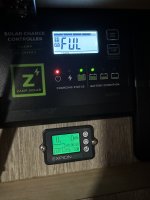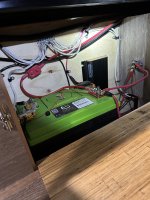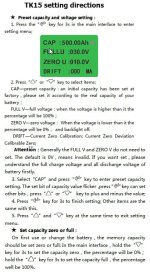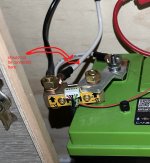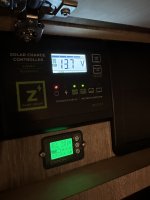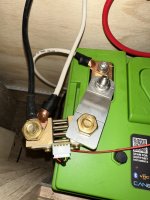Cgswimmer24
New member
I just got back to Alaska after picking up a new Alaskan Camper from Washington and had issues with my battery monitor on the trip home.
I have two 162AH Expion 360 lithium batteries with two solar panels, DC to DC charger and a Redarc charger. My Expion 360 battery monitor would decrease from 100% to zero without ever coming back up. The solar controller would show 100% and I know the unit has power but the battery monitor never increases. For example, we'll start the day off with the monitor reading 89%. After driving 15 hours with the DC to DC connected in full sunlight we park for the night and it's reading 72%. It will eventually decrease and stay at 0%. I reset it back to 100% a few times and it still only shows draw, no charge.
The only change I've noticed is when I got home and plugged it into the house on shore power. It brought it up from 0% to 80% overnight.
I talked to the E360 tech rep and their first take was that the system isn’t wired correctly but they’re sending out a new monitor to test first. Alaskan hasn’t been any help at all, telling me it’s wired right. But the E360 tech rep did tell me they’ve had to reach out to Alaskan in the past about other wiring issues Alaskan has not done properly.I’ve attached a few photos if anyone could provide some input. Much appreciated
Steve
I have two 162AH Expion 360 lithium batteries with two solar panels, DC to DC charger and a Redarc charger. My Expion 360 battery monitor would decrease from 100% to zero without ever coming back up. The solar controller would show 100% and I know the unit has power but the battery monitor never increases. For example, we'll start the day off with the monitor reading 89%. After driving 15 hours with the DC to DC connected in full sunlight we park for the night and it's reading 72%. It will eventually decrease and stay at 0%. I reset it back to 100% a few times and it still only shows draw, no charge.
The only change I've noticed is when I got home and plugged it into the house on shore power. It brought it up from 0% to 80% overnight.
I talked to the E360 tech rep and their first take was that the system isn’t wired correctly but they’re sending out a new monitor to test first. Alaskan hasn’t been any help at all, telling me it’s wired right. But the E360 tech rep did tell me they’ve had to reach out to Alaskan in the past about other wiring issues Alaskan has not done properly.I’ve attached a few photos if anyone could provide some input. Much appreciated
Steve

